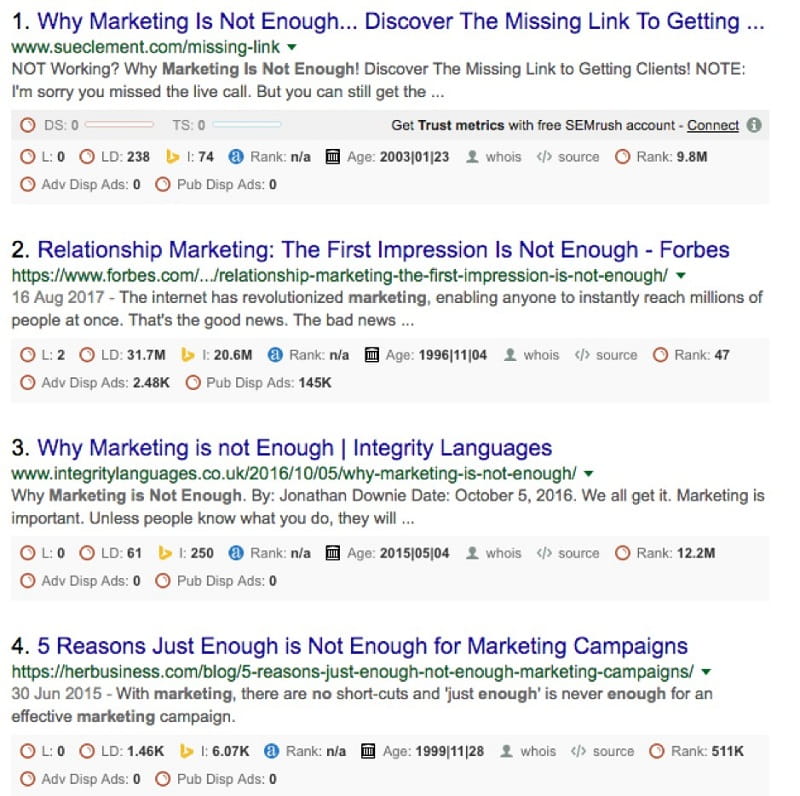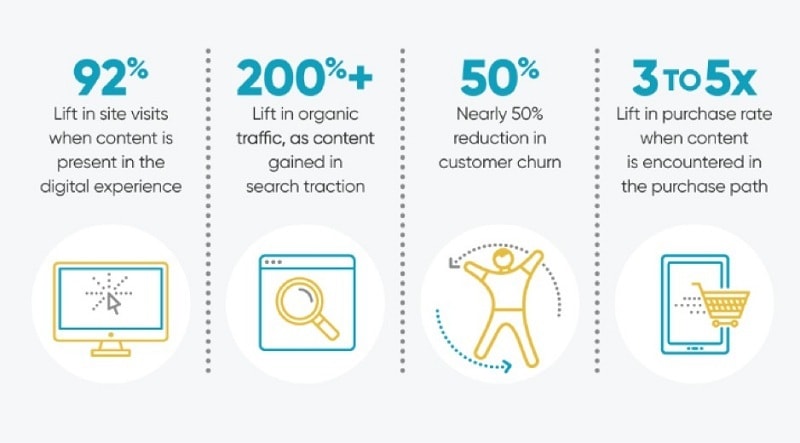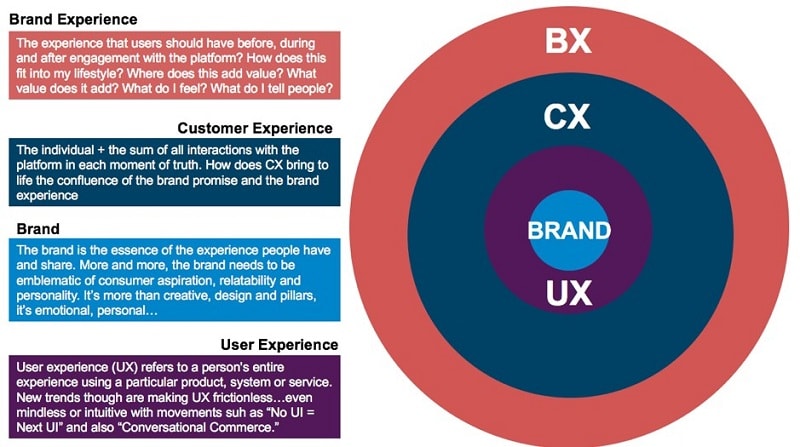
Why the Art of Story Telling Is Your Most Powerful Marketing Element
- Mark Edwards ·
- 5 Comments ·
- June 20, 2018
Telling stories is something we’ve been doing for millennia. There’s something deeply human about story telling. For example, think of your favourite novel, maybe it’s The Great Gatsby, maybe Catcher in the Rye?
Whatever it is, it’s obviously had a profound impact on you, and you can’t help but go back to it time-after-time. So perhaps you can see how stories and how you tell them can form the most critical cog of your marketing machine.
Creating a culture within the stories you tell can resonate deeply with an audience and when done correctly, you can form something that lasts for many years to come.
In this article, we’ll teach you how to create these stories, but be warned if your yarns don’t have a warmth and a sincere desire to connect, you won’t fool anyone.
Marketing Your Products Isn’t Enough…
Of course, your products are everything in the sense that they make money you need to survive, and general marketing does serve its purpose.
However, peddling your wares alone won’t cut the mustard. Sure, if you have a great product and you perform due diligence with your marketing strategies, everything will probably be fine.
Marketing strategies are incredibly important, but it’s all in the implementation. You can write out a thousand pages of plans, but if you can’t put these plans together effectively and they aren’t actionable, they won’t work. Period.
Google, ‘when marketing isn’t enough’. Here are the first four results:

There are tonnes of search results like this, and it means that businesses may have good products and a lovely marketing plan, but somewhere along the line something isn’t doing what they need it to do, and the channels they are using are not working for them.
This is another problem. It doesn’t matter where you promote your business; you’ll always be constrained by the rules of the game. For instance, you won’t get much, if any organic reach on Facebook these days.
Ranking in the search engines is a long-term investment. The same applies to any social platform, search engine or online marketplace. Your message will be distorted, and you’ll be limited to the guidelines of the platform, which will have an impact on your audience.
Just take a look at this infographic about the video game industry. There are nearly 3,000 video game companies in the US alone, that’s a lot of competition. And they are all fighting in the same sector, for the same audience, using the same channels, and the same problems will limit each and every one.
Creating a better product or spending more on marketing guarantees nothing.
We live in a world full of ways to get a message out there, we’re more connected than ever, but the irony is that it makes it harder to make your mark.
So, here’s the solution: focus on your brand, the story and the things that surround it, such as company culture and how your business makes a splash.
Spin a Yarn
Storytelling is a potent tool in marketing. However, you may be wondering, why it’s such an effective form of communication? This Quora answer gives us a fascinating insight. Humans are complex creatures, and stories from are such an intrinsic part of our culture, our past and our future.
However, the most important aspect of storytelling is emotion: a great story can make us laugh and cry and form attachments to those who star in them. This infographic provides us with information on how story’s translate into the marketing arena. It states that messages delivered in the form of stories are 22x more memorable than presenting simple facts.
This tells us that the people you’re trying to reach are crying out for something more memorable and exciting to sink their teeth into. However, as we mentioned, we’re more connected than we’ve ever been, so how can you create a reliable and actionable narrative?
First and foremost you need to understand the kind of narrative you wish to portray to make this work. Going back to the infographic nearly 80% of consumers say that they still value relevance in the content they consume.
Step 1: Create a relevant story that connects with your audience emotionally.
Step 2: Find a platform which tells your story in the best way.
Express Writers, state that emotionally invested consumers are 52% more valuable to your business and once you’ve cracked this formula things start to change:

Once you begin to tell a story, your whole business is like a great novel. Moreover, your products, channels and the industry will all perform a role within your story.
As we’ve mentioned, you’ll need to produce relevant, high-quality content that speaks to your audience and is driven by hard data. Just remember the asdic: the customer is always right. They know what they want better than you, and it’s your job to figure out what it is and put it in front of them.
If you can create content that tells your story and displays value and authenticity, then you’re on to a winner.
The Value of the Customer Experience Derives from Company Culture
Strong company culture is beneficial for staff; we know that. This then translates to highly productive staff that help to drive the customer experience, thereby increasing profit.
Perception and experience seem like two very different things – but they are essentially two sides of the same coin. You must consider how the customer experience intermingles with the perception of the brand as it can mean the difference between acquiring a customer and losing them to a competitor.
Poor experiences cost money and can impact your brand perception very, very quickly. On the other hand, great experience will spread the same way but will result in a completely different outcome.

Once you fully understand this graphic above and how it impacts your business, you can begin to refine and perfect and generate the results you desire.
Customer experience comes from the way your company operates. If you place introverted, non-communicative people in front line service teams, the results, nine times out of ten, are disastrous (that isn’t to say these kinds of people aren’t valuable in their own right, but they need the structure of the correct teams to thrive).
In many cases, a customer may need the support of these frontline team, such as sales or support, which may then upscale to conversations with the prospective managers of each team. These touch points are the lifeblood of your business; if these moments are handled incorrectly or sloppily, it can have be a reputation that is difficult to shake.
When your employees are enthusiastic, your business can grow with the right people on board and your storytelling will feel more natural. And this is when your brand will start to take on a life of its own.
So, how on earth can you build a culture conducive to natural growth and happiness? Company culture must trickle down from the top. Your culture must centre around creating and upholding core values, which is an integral part of your storytelling.
Using your team as a starting block, you can build a network that places the customer at the centre of everything that everybody in the business does. When you build and share your culture that places customers at the centre, your marketing will naturally focus on customer experience.
Google, for example, is famous for its culture. They provide their teams with free meals, employee away days and financial incentives. This combined with the open communication from the executives, means that some of the most talented individuals are drawn to its doors. This, in turn, translates to fantastic customer experience, or user experience in this case.
When you build a customer experience that closely matches your culture, your storytelling is more organic, and it helps to drive success. But, when this cultural identity starts to slip, you’re betraying your customers, your employees and your marketing message.
It’s also important to consider how this permeates every level of your client/customer experience. For instance, professionally developed waiting room videos that play on a loop can entertain your audience while they wait for an appointment or booking, while also showcasing the versatility of your brand and its creative use of videography. This proud showing of your company’s story can punctuate every element of your brand, but only if you know where to place it.
Make a Splash
Quite a wide-reaching title and it could refer to anything. When it comes to marketing, this translates into creating relationships with your customers that centre on trust and communication. Because, as we’ve already gathered these factors turn in to sales and returning custom. After all, 57% of consumers believe that less than half of brands portray their real selves in their marketing. This is not something you want to be associated with.
Imagine if you fit into the ‘authentic’ demographic, you could make a real splash in the lives of those customers. Let’s say that the ocean is the internet, what would happen if you balled up a healthy mixture of storytelling and culture and threw it in? That’s precisely what making a splash means in this instance.
How Can You Make the Most of All This Stuff We’ve Talked About?
You must build your business around positive vibes and show the world how much you value each customer. That’s the bottom line. It might be simple to suggest that the story, culture and making a splash is a choice and you may not partake unless you have the time. After all, how can they be measured?
But here’s the secret: story, culture and making a splash can make your brand more unique than any product you sell ever will.
There’s always someone in your space that will be willing to go toe-to-toe with you, and the reality is you’ll sometimes come off second best. And the marketing channels have you at their mercy, but there’s little you can do about that.
But, your story remains your beacon of consistency. This will stay the same – sure the focus may shift to different products or servicea, but your culture and message will remain. If you’re struggling to make a splash in your sector, tread your own path, follow the road less travelled and make a genuine connection with your audience in a way only you can.
Create a culture that thrives on happy individuals – your customers and your employees – and you’ll see things begin to change for the better. Any story worth telling must have a soul; it must have heart otherwise someone will be very reluctant ever to pick it up again.

An interesting take on digital marketing. Never really looked at it in this way but yes, it’s all about creating a story to be told.
Good use of statistics here, Mark! We have businesses come to us on a regular basis who have a great story to tell, but no idea of where to begin. It really does make a difference and humanizes the company.
That’s a great definition; humanizes. That’s what I feel some businesses lack. They need to earn a profit, but they also need to remember that their customers are real people.
Love the concept of building positivity of the brand from inside out. Need to get everyone on board of a business to succeed in this competitive market.
Exactly Owen, if your staff doesn’t believe in what they sell, how can you possibly expect the customers to be positive about it?